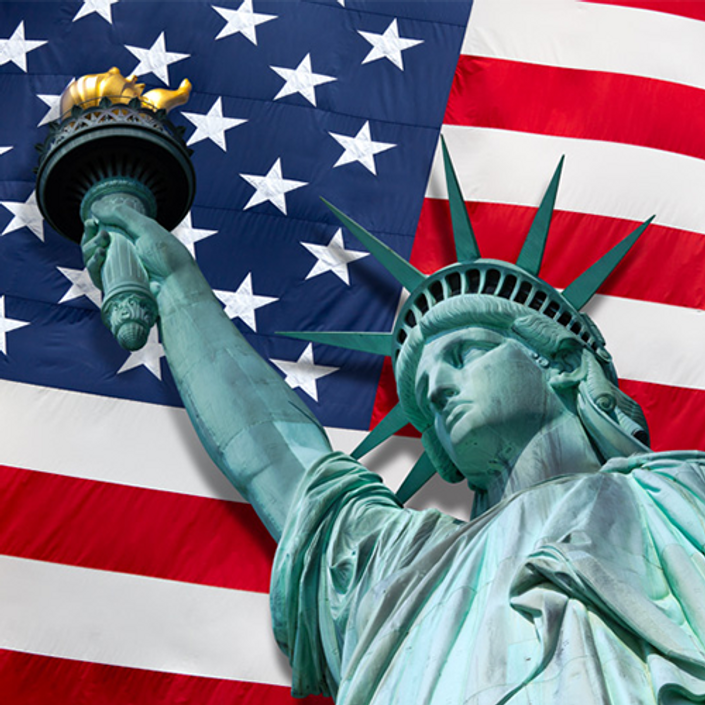
Special Courses: Introduction to the United States
Audio + Text
Introduction to the United States
Do you want to know more about the United States?
Do you want to be able to talk with Americans knowledgeably about the U.S.?
Do you want to know how the U.S. government works?
Do you want to know more about the different parts of the U.S., its history, and its people?”
"Introduction to the United States” is a course that answers your questions about the United States in a new and exciting way!
This course uses some of the 100 questions from U.S. naturalization test, the test that people take to become a citizen of the United States. It focuses on how the U.S. was formed and how it works, who the important people are in its history and in the current government, and the different parts of this very big and diverse country.
Audio: 12 hours, 52 minutes
Learning Guide: 203 pages
WHAT YOU GET
1. MP3 Audio Files for All 100 Questions
2. Learning Guide: This is a written guide with
a. A full transcript of every word from every question, answer, and explanation
b. Glossaries with definitions
c. Sample sentences
3. Index of Glossary Terms: It includes all glossary terms from all 100 questions with definitions and easy reference number to the questions where the term appears.
HOW IT WORKS
Each question is divided into three parts. You will first hear the question read, then the short answer, and then a longer explanation of the topic. The longer explanation has built-in definitions of new terms and phrases, so you will understand it just by listening.
You will listen to the question-answer-explanation first at a slow speed, and then again at a normal rate of speech (fast). In this course, you encounter the important key vocabulary several times throughout the course, helping you really understand the meaning of the terms and expressions, and how to use them correctly.
DON'T JUST LISTEN - READ IT, TOO!
Get the most out of “Introduction to the United States” by following along with the Learning Guide, which has a complete written transcript of every word spoken in the lessons.
All of the vocabulary and expressions used in the lesson are also listed and defined in the “Glossary” of the Learning Guide, giving you the opportunity to read and review whenever you’d like. Plus, you are provided with an extra sample sentence using the word correctly in context.
Finally, you will receive a BONUS “Index of Glossary Terms,” which lists all of the glossary terms and their definitions from all 100 questions, with easy reference number listed so you can easily find the question(s) where they appear. By listening to and reading each lesson, you’ll have a truly powerful way to increase your skills in English.
LESSON FORMAT
Each lesson includes downloadable MP3 and PDF files you can listen to and read on any computer, phone, or tablet.
After you purchase, you have 30 days to download the MP3 audio and PDF Learning Guide files.
Please note: All files are for download only; we do not sell books or CDs.
ARE SPECIAL COURSES RIGHT FOR YOU?
If you do not want a monthly membership or you want to download your lessons in MP3 and PDF file formats, then Special Courses are right for you!
Get started now!
Your Instructor
Dr. Jeff McQuillan is a recognized expert and leading researcher in English language learning and teaching. He received his Ph.D. in applied linguistics and education from the University of Southern California, and was a university professor for many years. He's published dozens of articles and books related to linguistics, literacy, and English language learning. His work has appeared in the media both nationally and internationally, including CNN, Washington Post, Los Angeles Times, Deutschlandfunk Radio, El Pais, China Post, MacWorld, Diario Financiero, Universia, The Times (London) and many others.